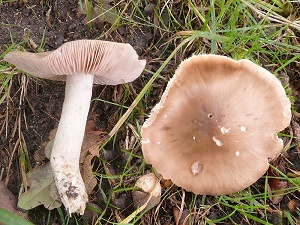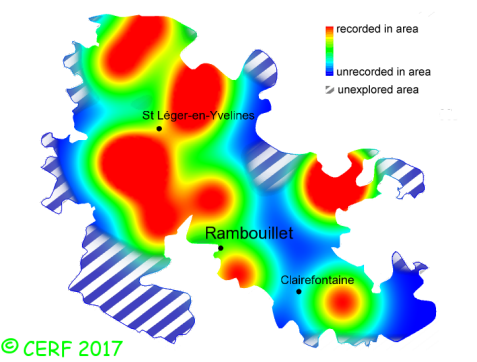| Entoloma rhodopolium (Fr.:Fr.) P. Kumm. |
|
|
|
|
|
|
The cap is brown to pale brown, convex to battered then expanded, and sometimes depressed at the centre, sometimes with a broad umbo; its margin is striate or wavy. The cap surface is smooth, not viscid nor sticky. The stem is white, without ring. The flesh is white, unchanging; its taste is faint; the odour is not distinctive and not mealy; its texture is fibrous. The gills are white then pink, adnate to emarginate, crowded . The spore print is pink. This species is saprophytic. It grows on the ground, in broad-leaved (rarely coniferous) woods, most of the time with beech, also with pine. The fruiting period takes place from July to November.
Chemical tests : none. Distinctive features : grey-brown to yellow-brown cap, with a striate margin; no odour of chlorine or bleach; mostly with beach Entoloma rhodopolium is infrequent and scattered in the forest of Rambouillet, and is occasional, more generally speaking . | ||
|
page updated on 14/01/18

